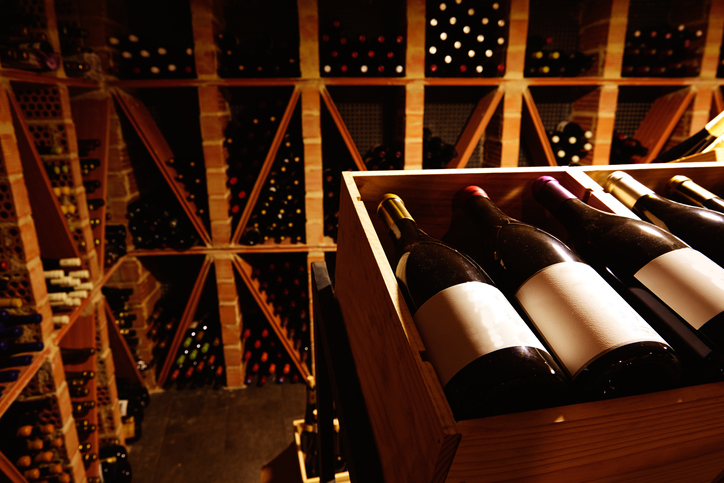The essentials of wine protection for your shipment
Having the correct wine protection measures in place during shipment is essential for keeping the product in peak condition. Otherwise, temperature and humidity shocks can quickly spoil the wine, meaning that it is no longer fit for sale. In this article, the effects of changes in temperature and humidity on wine are discussed, followed by describing the wine protection measures you can take to prevent this happening.
Why does wine need protecting?
Similar to many other perishable goods, wine is a very sensitive, live commodity. Its appearance, aroma, and taste are all easily spoilt by chemical processes that are accelerated by changes in temperature and humidity, as well as by exposure to light. More specifically, these changes lead to oxidation and organoleptic degradation of the wine.
The ideal temperature for wine conservation is +10°-20°C / 50-68°F, with an increase in temperature of 10°C (50°F) likely to double the rate of aging of the wine. Also, increases in external temperature can cause wine bottle leakage, damage corks and therefore spoil quality of wine.
Types of wine damage
Thermal and humidity shocks can easily damage the quality of your wine. Some of the most common types of damage arising through increases in temperature and humidity due to inadequate wine protection include:
loss of acidity or freshness,
loss of fresh fruit aromas,
premature aging, or
changes in colour.
However, a temperature decrease can also be harmful to wine through the precipitation of both crystals and phenolic material, and also by damaging the packaging. More details about the types of wine damage that might occur are shown below.
Wine protection: the solution
To prevent damage to wine in transit, it is therefore essential to have the correct wine protection measures in place. This usually involves the need to: (1) predict the climate conditions that are forecast during the shipment of the wine, and (2) use the correct type of shipping container.
1. Predict climate conditions
By using meteorological data sourced through the World Meteorological Organization (WMO), we can predict the temperature and humidity on the planned route of your shipment. Our database of global shipping—gathering 110,000 sea-shipping routes, 3,300 alternative sea routings, and 2,500 cities—combined with the meteorological data allows you to understand the thermal risks facing your products in transit. This detailed knowledge, displayed via the myHillebrand platform, enables shipments to be planned better, which results in a high level of wine protection.
The myHillebrand platform even shows the carbon footprint of your shipment, helping you to monitor and manage emissions. This data can then be used to identify particular opportunities to reduce carbon emissions.
2. Use the correct shipping container
The second part of the solution is to use a shipping container that offers sufficient wine protection. A refrigerated container—often called a “reefer”—is ideal when a very exact (hot or cold) temperature setting is required. This is achieved through the refrigeration unit that is installed on the container, which circulates cool air internally. However, the electricity that is required to power this cooling inevitably results in a greater cost of these containers.
Alternatively, an insulated liner within a standard container is a much more cost-effective option. These relatively simple yet effective liners function in much the same way as any other form of insulation, and prevent thermal shocks that can spoil wine and other consumables.
Hillebrand’s insulated VinLiner limits temperature increases to an average of 8–11°C (14–20°F) and protects goods in transit for 40 days and longer (compared with loading temperature). Furthermore, it protects against:
thermal shocks,
external temperatures,
humidity infiltration,
condensation,
cross-contamination, and
bad smells.
This performance is achieved through a patented system to maximize the air gap around the liner, a floor covering to ensure cleanliness and sealing, and food-grade compatibility with the US Food and Drug Administration (FDA). The result is 94% radiant heat reflection, compared with only 50% from competitors’ liners (using ASTM testing methodology). Our VinLiners are also fully recyclable and suitable for all containers/trucks and pallet sizes.
This case study describes how wines were shipped within an insulation liner across the equator by an Italian winemaker.
Wine protection: it is important to get it right
Wine is a very temperature-sensitive perishable product. Changes in temperature and humidity can all too easily result in spoiling the wine’s appearance, aroma, and taste, meaning that it is no longer suitable for sale.
Our risk management solutions have been developed to preserve the quality, taste, and freshness of your wine while it is in our care. This involves predicting the climate that is expected during the shipment—this advance warning of temperatures and humidity allows better planning ahead of the journey. In addition, our insulated liners offer a very effective option, and they are also much cheaper than reefers.
To discover how we can help with wine protection for your shipments, please contact our team.
Wine protection refers to the methods and techniques used to preserve the quality, taste and freshness of wine during transportation or storage. This is important to ensure that the wine reaches its destination in optimal condition. Knowing the climate conditions during the shipment and using insulated liners can help protect your wine.
Yes, for wine protection in storage and transit, our insulation liners provide protection from thermal shocks and other risks, and are fully recyclable.
Yes, insurance is available for wine shipments to protect against loss or damage during transportation. It's important to work with a logistics provider like Hillebrand Gori, who offers comprehensive insurance coverage and has experience handling wine shipments.
If your wine shipment was damaged during transit, contact your logistics provider and insurance broker immediately. They can guide you through filing a claim.

.png?sfvrsn=786e1c6a_1)



